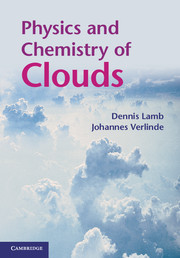Appendix A - Cloud classification
Published online by Cambridge University Press: 07 October 2011
Summary
The naming of cloud types began in the early 1800s. Jean Babtiste Lamarck, a French naturalist, proposed a naming scheme in about 1802, but his nomenclature did not catch on, perhaps because of the cumbersome French terms he used. Lamarck is, however, credited with proposing that clouds be identified with the level (high, middle, or low) at which they appear in the atmosphere. Then, within a year or so, Luke Howard, an English chemist/pharmacist, suggested that clouds could be grouped into four main categories: Cirrus (Latin for hair curl), Cumulus (heap), Stratus (layer), and Nimbus (rain). The simple Latin terminology likely helped Howard's categorization to be accepted more readily.
The cloud classification scheme used internationally today thus traces its roots back to the suggestions of Lamarck (for organization into three levels) and Howard (for use of Latin names). The names in Latin follow the convention used in biology: Genus species. Subspecies or varieties are often appended to distinguish one species of cloud from another. The names given to various cloud types, now as then, are all based on human observations from the surface. The modern methods of observing clouds (aircraft, radar, satellites, etc.) were not available to the early observers. The determination of cloud type is based on visual appearance only, mainly the shape/form and size of the cloud. The altitude of cloud base is difficult to judge precisely, but the form usually helps us distinguish high clouds from mid-level and low clouds.
- Type
- Chapter
- Information
- Physics and Chemistry of Clouds , pp. 548 - 549Publisher: Cambridge University PressPrint publication year: 2011



